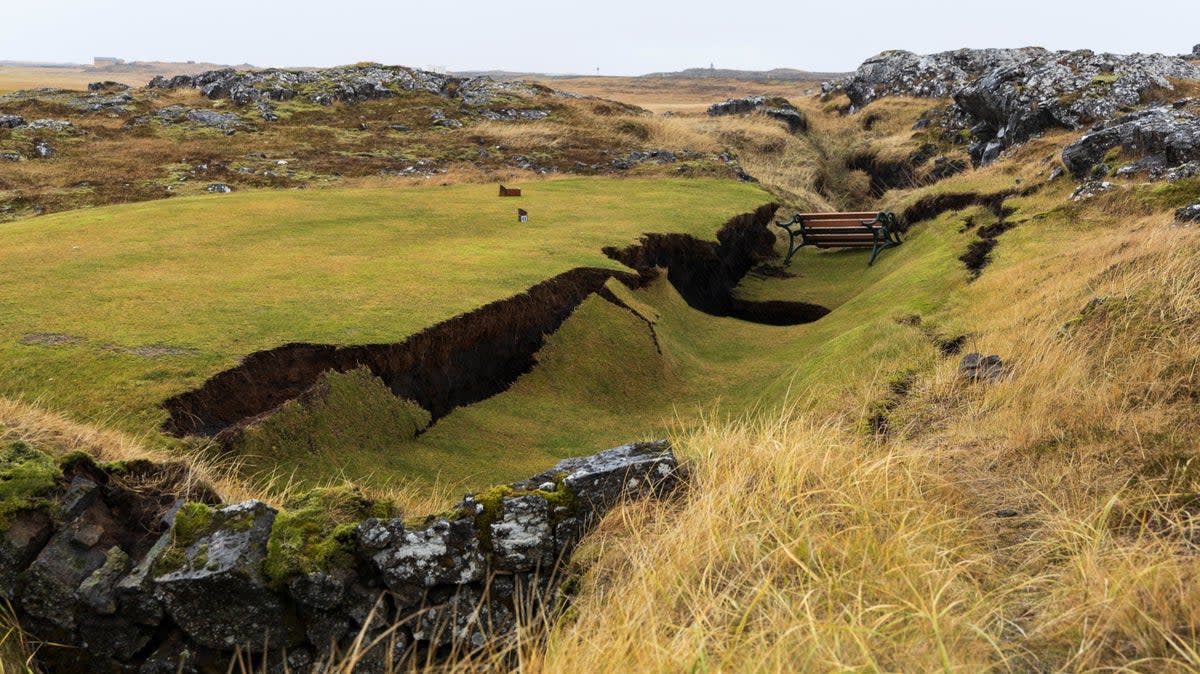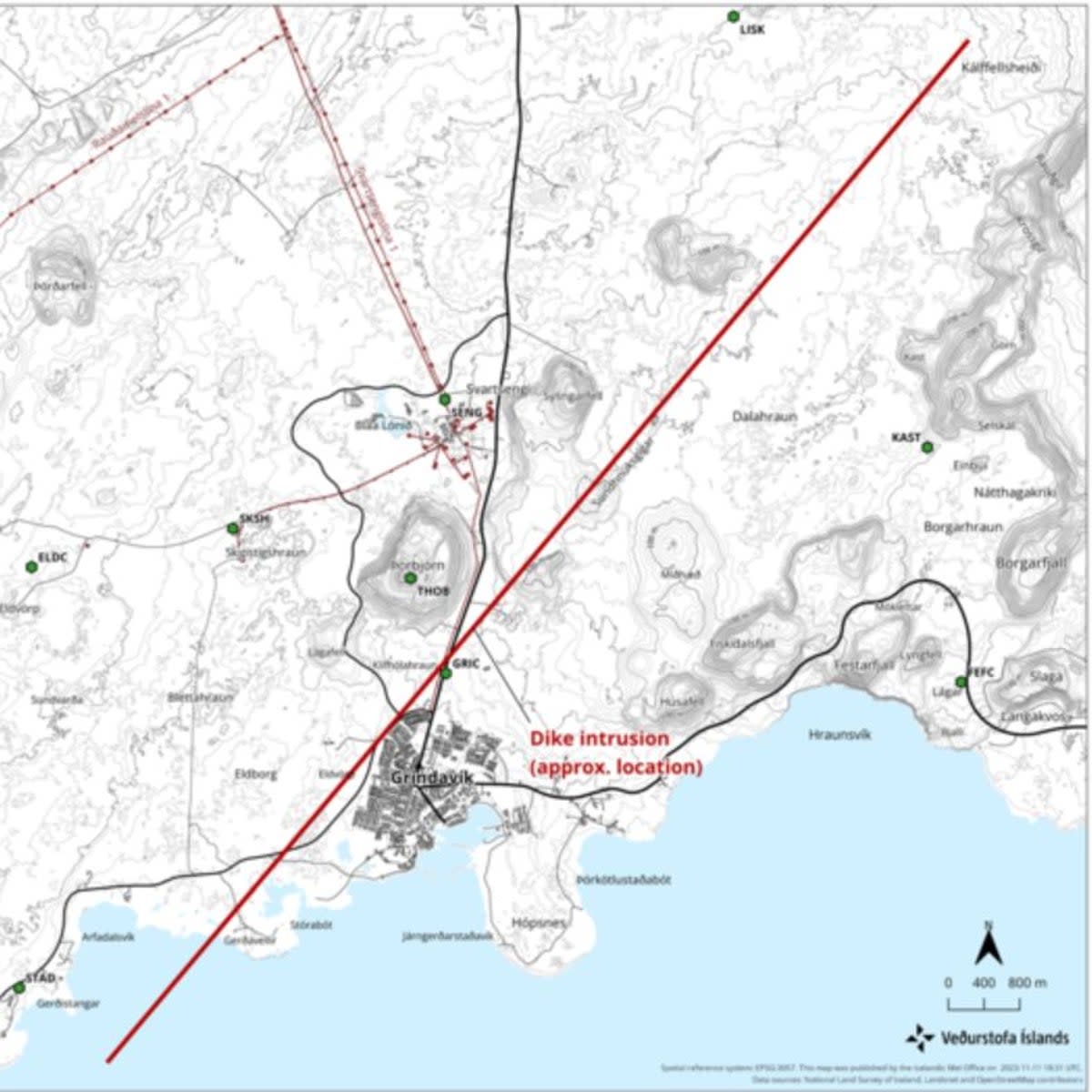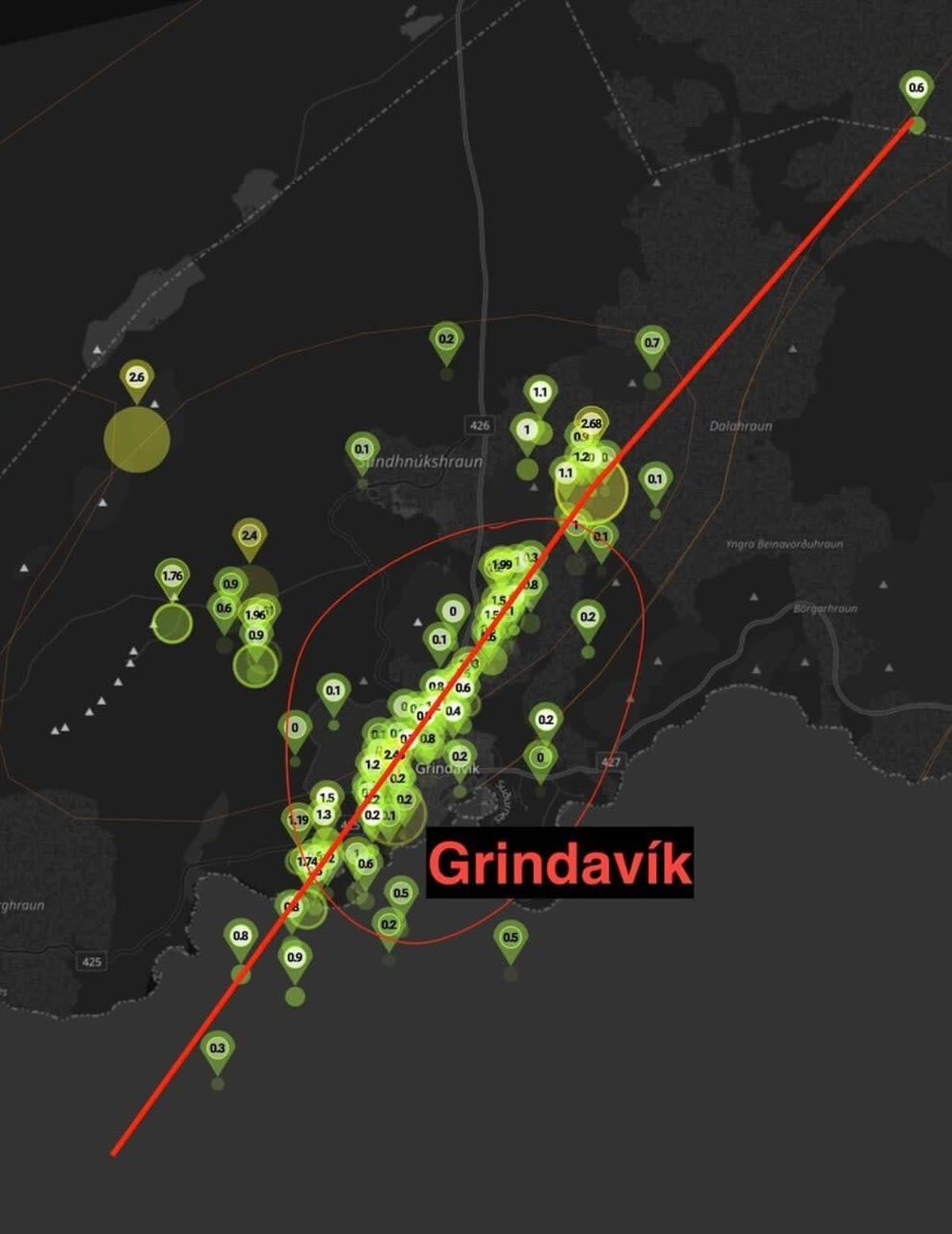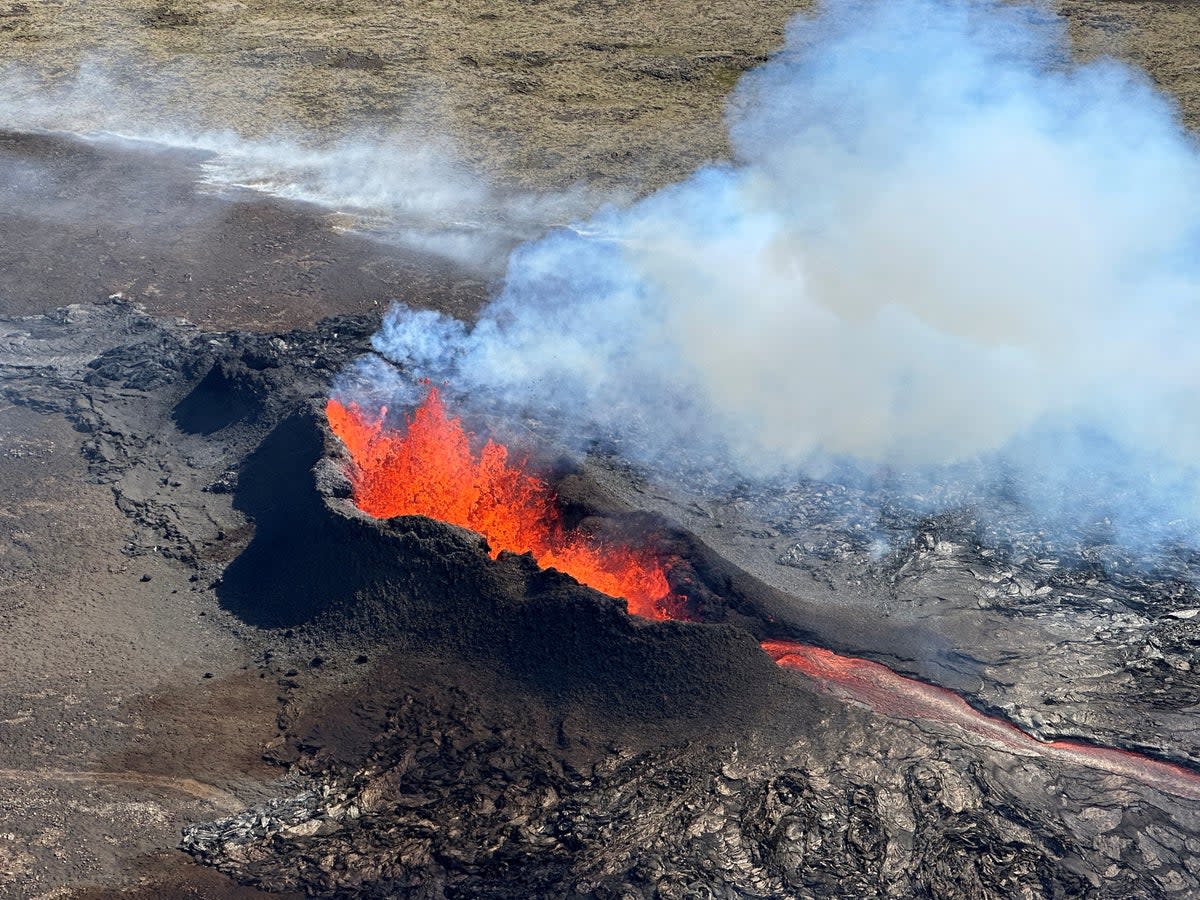Iceland earthquake: Town of Grindavik could be obliterated if volcanic eruption strikes
A volcanic eruption could destroy the Icelandic town of Grindavik or lead to extensive ash clouds, experts have warned.
The country has been shaken by more than 2,000 small earthquakes in the past few days, prompting fears that the tremors could disrupt the Fagradalsfjall volcano on the Reykjanes peninsula in the southwest of the country.
Thousands have been told to evacuate Grindavik as a precautionary measure, while a magma tunnel stretches below the surface. If an eruption occurs in or close to the town, the consequences will be devastating, volcanologist Armann Hoskuldsson warned.
He told state broadcaster RUV: “This is very bad news. One of the most serious scenarios is an eruption in the town itself, similar to that in Vestmannaeyjar 50 years ago. This would be much worse.”
Ragga Agustsdottir, who lives close to Grindavik, said residents were fearful of what could happen if an eruption struck. “The scenario on the table now is that it will happen in or just north of the town of Grindavik. There’s no good option here,” she told The Independent.
If a volcanic eruption does not happen in Grindavik, one could occur out at sea, experts have said.

MP Gisli Olafsson said the country is praying that the “worst-case scenarios do not happen”.
He shared on X/Twitter: “The situation in Grindavik continues to become even more grave than before. The town has already suffered considerable damage from the earthquakes and from the shifts in the ground as the magma thrusts itself upwards.”
He said a 15km (9.3-mile) magma tunnel could turn into a fissure vent eruption as the chamber beneath the area is twice as large as in previous eruptions in Reykjanes over the past few years. There is a chance that the eruption could occur under the ocean, resulting in an explosive eruption and extensive ash clouds, he said.

“Scientists have warned that they may not be able to give any further warning of when the magma reaches the surface, making it quite dangerous to go in there,” he added.
The warning comes as 880 earthquakes below magnitude three were recorded overnight, compared to the previous 1,485 earthquakes that rocked the country in previous days. Some 3,000 residents have been evacuated, with many forced to leave their pets behind.

A meeting on Saturday afternoon determined that only residents from the Porkatlustao district were able to return safely for a short time to collect necessities, reported RUV.
Magnus Tumi Gudmundsson, a professor of geophysics, told RUV that seismic activity has continued despite slowing down. He predicted three scenarios: the first is an eruption near Grindavik or north of the town; the second is that there is no eruption; and the third, and least likely prediction, according to Mr Gudmundsson, is an undersea eruption.
Iceland is highly susceptible to natural disasters because it lies on the Mid-Atlantic Ridge – a divergent plate boundary where the North American Plate and the Eurasian Plate are moving away from each other, leading to volcanic eruptions and earthquakes.

“I don’t think it’s long before an eruption, hours or a few days. The chance of an eruption has increased significantly,” Thorvaldur Thordarson, professor of volcanology at the University of Iceland, told RUV yesterday.
Reykjanes is a volcanic and seismic hotspot southwest of the capital Reykjavik. In March 2021, lava fountains erupted spectacularly from a fissure in the ground measuring 500-750m long in the region’s Fagradalsfjall volcanic system.
